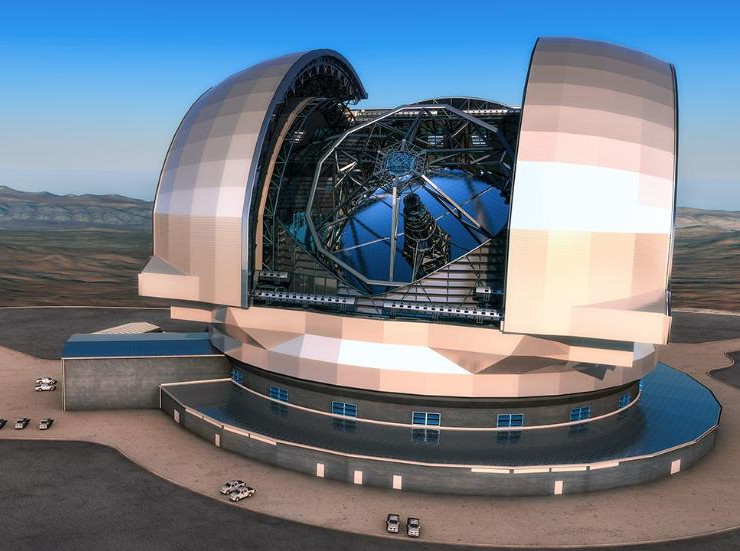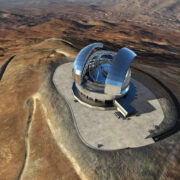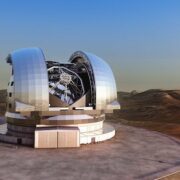Period: since 2016
CAB’s participation in the development of HARMONI:
https://auditore.cab.inta-csic.epereiras/harmoni/
The European Extremely Large Telescope (ELT) is led by the European Southern Observatory (ESO) and will address many of the unanswered questions about the Universe. It is the world’s largest optical/near-infrared telescope and will gather 13 times more light than the largest optical telescopes available today. Its main mirror is 39 metres long. The ELT will be able to correct for atmospheric distortions from the outset, providing images 16 times sharper than those of the Hubble Space Telescope.
This project will greatly advance astrophysical knowledge, allowing detailed studies of planets around other stars, the first galaxies, supermassive black holes, etc.
The ELT is scheduled to start operations in 2025 and will be located on Cerro Armazones, Chile, at ESO’s Paranal Observatory.
Centro de Astrobiología is one of the main partners of one of the six instruments to be installed on the ELT, HARMONI, which will be one of the first to be fitted on the telescope.
HARMONI (High Angular Resolution Monolithic Optical and Near-infrared Integral field spectrograph) will be the instrument that will perform spectroscopy in the visible and near-infrared range. It is an integral field spectrograph, capable of acquiring spectra simultaneously, in 30,000 adjacent regions on the sky, in order to map an astronomical object over a wide range of wavelengths.
Thanks to the ELT’s huge 39-metre main mirror, HARMONI will be used to explore galaxies in the early Universe, study the components of the local Universe and characterise exoplanets in great detail. In many ways, it will be complementary to ALMA and the James Webb Space Telescope.
The HARMONI consortium consists of six core partners and several associated institutes. The main partners are the University of Oxford and the Centre for Astronomical Technology, UK; the Centre de Recherche Astrophysique de Lyon and the Laboratoire d’Astrophysique de Marseille, France; the Centro de Astrobiología (CSIC-INTA) and the Instituto de Astrofísica de Canarias (IAC), Spain; and the European Southern Observatory (ESO). Durham University, UK, will soon be upgraded from associate to partner. Other partner institutions are the National Office for Aerospace Studies and Research, the Institute for Research in Astrophysics and Planetology and the Institute of Planetology and Astrophysics of Grenoble, all in France. CAB is involved in both the technical development of the instrument and its calibration.









